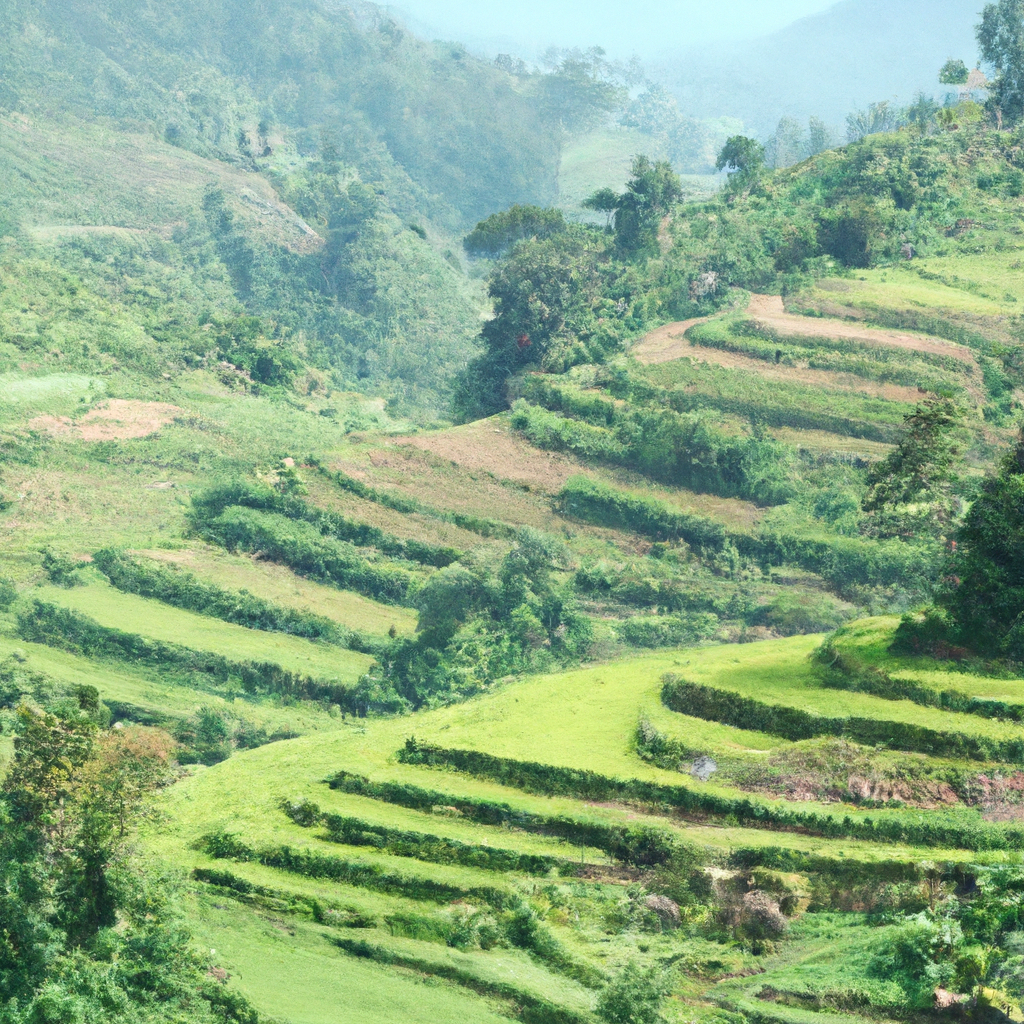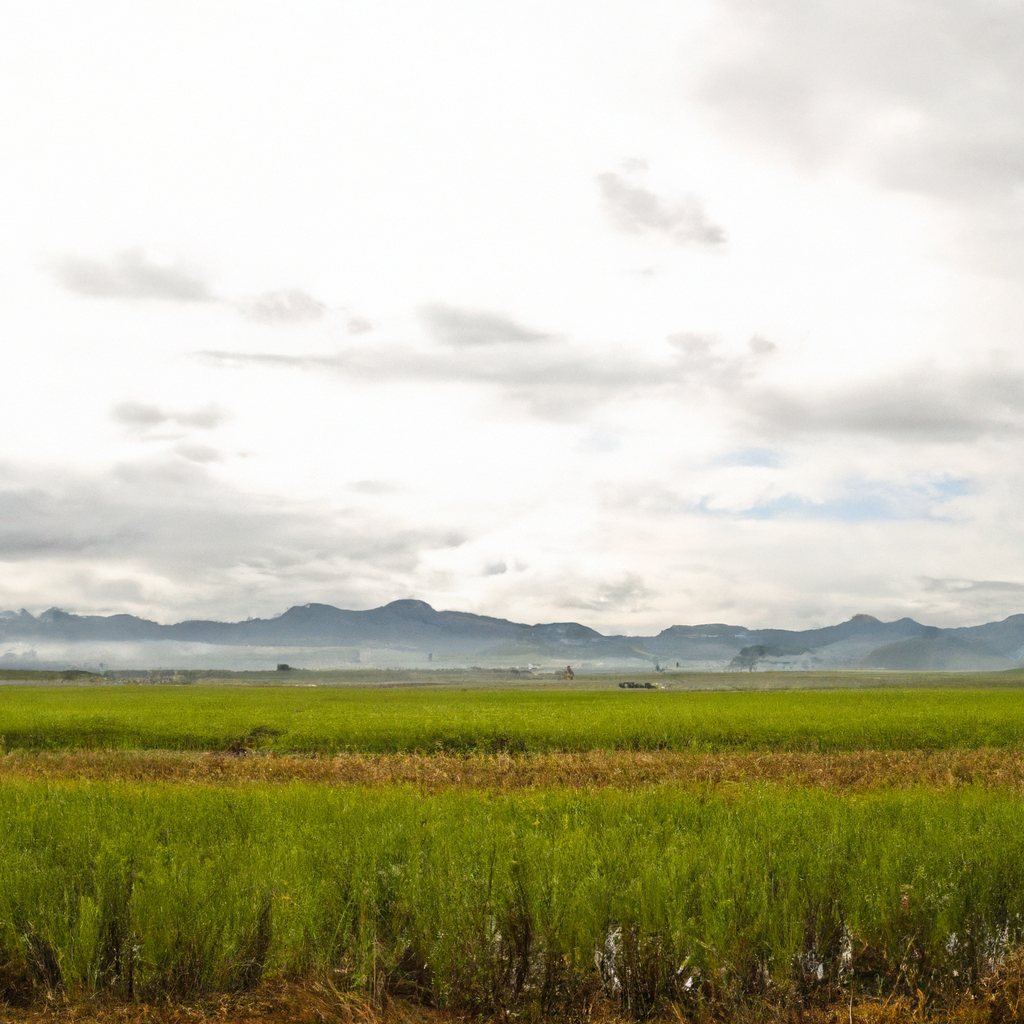If you’re considering investing in land in Malaysia, you may be wondering if it’s possible to invest in rural or agricultural land. Well, the answer is a resounding yes! Malaysia offers numerous opportunities for investors looking to venture into the rural and agricultural sectors. In this article, we will discuss the various aspects of investing in rural or agricultural land in Malaysia, including the potential benefits, legal considerations, and tips for successful investments. Whether you’re a seasoned property investor or just starting out, finding out more about this lucrative market could be your key to long-term financial success. So, let’s get started and explore the world of rural and agricultural land investment in Malaysia!

Regulations on Purchasing Rural and Agricultural Land
Investing in rural or agricultural land in Malaysia can be a lucrative venture with its potential for capital appreciation and income generation. However, there are specific regulations and restrictions that need to be adhered to before making such an investment. In this article, we will explore the types of land ownership in Malaysia, the restrictions on purchasing agricultural land, and the rules and regulations surrounding foreign ownership.
Types of Land Ownership in Malaysia
In Malaysia, there are different types of land ownership that investors need to be aware of before considering the purchase of rural or agricultural land. The three main categories of land ownership are freehold, leasehold, and Malay reserve land.
Freehold land grants the owner full ownership rights and has no restrictions on usage. This type of land ownership is highly sought after for investment purposes as it provides more flexibility in terms of development and usage.
Leasehold land, on the other hand, grants the owner the right to use the land for a specific period of time, usually 30, 60, or 99 years. While leasehold land can still be utilized for agricultural purposes, it has certain limitations when it comes to long-term investments.
Malay reserve land is land that is reserved exclusively for native Malays and cannot be sold to non-Malays. This type of land is protected by the government and is not available for purchase by foreigners.
Restrictions on Purchasing Agricultural Land
As an investor looking to purchase agricultural land in Malaysia, there are certain restrictions that you need to be aware of. The Land Acquisition Act 1960 prohibits the purchase of agricultural land by foreigners unless they obtain approval from the state authorities. The approval process typically involves submitting a proposal outlining the intended use of the land and demonstrating how the investment will benefit the local economy.
Additionally, there are restrictions on the size of agricultural land that can be purchased by foreigners. The maximum size allowable for foreign ownership is typically limited to 50 acres. Anything beyond that requires special approval from the relevant authorities.
It is important to note that different states in Malaysia may have their own regulations and requirements regarding the purchase of agricultural land. It is advisable to consult with local legal professionals or land agents familiar with the specific state’s regulations before proceeding with any investment.
Foreign Ownership Rules and Regulations
Foreign ownership of land in Malaysia is governed by the National Land Code and the various state enactments. While foreign investors can purchase commercial or industrial land, the acquisition of agricultural land is subject to stricter regulations.
Foreigners who are interested in investing in rural or agricultural land in Malaysia can do so through joint ventures with Malaysian companies. This allows for the pooling of resources and expertise, while also complying with the regulations regarding land ownership. It is important to ensure that the joint venture agreement is carefully drafted to protect the interests of all parties involved.
Another option for foreign investors is to lease agricultural land instead of acquiring it outright. Leasing land provides more flexibility and reduces the restrictions imposed on foreign ownership. Lease agreements can be tailored to suit the specific needs and objectives of the investor, with options for renewal and transferability.
Benefits of Investing in Rural or Agricultural Land
Investing in rural or agricultural land can offer a range of benefits for investors. These benefits include potential for capital appreciation, income generation through farming activities, and diversification of investment portfolio.
Potential for Capital Appreciation
One of the key advantages of investing in rural or agricultural land is the potential for capital appreciation. As the population continues to grow, the demand for food and agricultural products will also increase. This can drive up the value of agricultural land over time, making it a potentially lucrative long-term investment.
In addition, the scarcity of agricultural land and the limited supply contribute to its potential for capital appreciation. As urban areas expand and demand for development increases, the availability of agricultural land diminishes, leading to higher prices.
Income Generation through Farming Activities
Investing in rural or agricultural land provides the opportunity to generate income through farming activities. Agriculture remains a vital sector in Malaysia, contributing significantly to the country’s economy. By utilizing the land for farming purposes, investors can tap into this market and generate a steady income stream.
Different types of crops can be cultivated depending on the suitability of the land and the market demand. Cash crops such as oil palm, rubber, and fruit orchards have shown to be profitable in Malaysia. Engaging in farming activities allows investors to participate in the entire value chain, from cultivation to processing and distribution.
Diversification of Investment Portfolio
Investing in rural or agricultural land offers diversification benefits for investors. It provides an opportunity to diversify their investment portfolio beyond traditional asset classes such as stocks and bonds. Agricultural land is a tangible asset that is not directly correlated with the performance of the stock market, providing a hedge against market volatility.
Furthermore, agricultural land can act as a safe haven during times of economic uncertainty. The demand for food and agricultural products remains relatively stable regardless of economic conditions. This stability can help protect investors’ portfolios from fluctuations in other sectors.
Factors to Consider Before Investing
Before investing in rural or agricultural land, there are several factors that should be carefully considered. These factors include location and accessibility, soil and climate conditions, infrastructure development, market demand and potential, and existing land use and conversion regulations.
Location and Accessibility
The location of the land plays a crucial role in its investment potential. Proximity to markets, transportation networks, and basic amenities is essential for the efficient distribution of agricultural products. Investing in land that is conveniently located can reduce transportation costs and improve access to potential buyers.
Additionally, the accessibility of the land is an important consideration. Adequate road networks and transportation infrastructure are necessary for the smooth movement of farm equipment, workers, and supplies. Investing in land that is well-connected to major roads and transportation hubs can enhance productivity and reduce logistical challenges.
Soil and Climate Conditions
The suitability of the soil and climate conditions for the intended agricultural activities is a critical factor to consider. Different crops require specific soil types and climatic conditions to thrive. Conducting soil tests and analyzing the climate patterns of the area can help determine the feasibility of cultivating certain crops.
Consulting with agricultural experts and local farmers can provide valuable insights into the crops that are suitable for the specific location. Understanding the soil composition, drainage capabilities, and rainfall patterns can help mitigate potential risks and maximize the productivity of the land.
Infrastructure Development
Infrastructure development in the surrounding area can have a significant impact on the investment potential of rural or agricultural land. Availability of utilities such as electricity, water supply, and irrigation systems is crucial for agricultural activities. Adequate infrastructure can enhance the productivity of the land and minimize operational costs.
Investors should also consider the presence of processing and storage facilities nearby. Having access to these facilities can streamline the post-harvest processes and improve the competitiveness of the agricultural products in the market.
Market Demand and Potential
Understanding the market demand and potential is essential for a successful investment in rural or agricultural land. Conducting market research and analyzing consumer trends can provide insights into the demand for specific crops and agricultural products.
Investors should also evaluate the competitiveness of the market and consider how the land can differentiate itself from existing offerings. Identifying niche markets or unique selling propositions can help investors capture a share of the market and increase profitability.
Existing Land Use and Conversion Regulations
Existing land use and conversion regulations are important considerations that can impact the investment potential of rural or agricultural land. Some lands may be designated for specific purposes, such as conservation areas or protected forests, and cannot be converted for agricultural use.
Understanding the land use regulations and restrictions is crucial to avoid legal issues and ensure compliance with the law. Conducting due diligence and consulting with relevant authorities can provide clarity on the permissible land uses and potential conversion processes.
Key Strategies for Investing in Rural or Agricultural Land
To maximize the potential of investing in rural or agricultural land, several key strategies should be adopted. These strategies include engaging with local agriculture communities, developing a robust business plan, considering long-term investment, and investing in sustainable farming practices.
Engage with Local Agriculture Communities
Engaging with the local agriculture communities is essential for gaining insights into the local market dynamics and establishing networks. Building relationships with local farmers, cooperatives, and agricultural associations can provide valuable knowledge and support. This can help investors understand the challenges and opportunities in the local agricultural sector and identify potential collaboration opportunities.
Develop a Robust Business Plan
Developing a robust business plan is crucial for any investment, including investing in rural or agricultural land. The business plan should outline the objectives, strategies, and financial projections for the investment. It should also include a detailed analysis of the costs involved, revenue streams, and potential risks.
Consulting with agricultural experts and industry professionals can help ensure that the business plan is realistic and aligned with the specific needs of the agricultural sector. Regularly reviewing and updating the business plan based on market dynamics and changing conditions is crucial for the long-term success of the investment.
Consider Long-term Investment
Investing in rural or agricultural land is a long-term commitment that requires patience and dedication. The returns on investment may not be immediate, and it often takes time for agricultural activities to reach their full potential. Investors should have a long-term perspective and be prepared to allocate resources for ongoing maintenance, improvements, and crop management.
Considering the long-term prospects of the investment is important when making financial decisions. Evaluating the growth potential of the agricultural sector and the stability of market demand can help investors determine the viability and sustainability of their investment.
Invest in Sustainable Farming Practices
Sustainable farming practices are gaining importance in the agricultural sector globally. Investing in sustainable farming practices can help increase productivity, reduce environmental impact, and enhance the long-term viability of the investment.
Implementing practices such as organic farming, water conservation, and proper waste management can improve the quality of the agricultural products and attract environmentally-conscious consumers. It can also contribute to the preservation of natural resources and protect the land for future generations.

Financing Options for Rural and Agricultural Land Investment
Once the decision to invest in rural or agricultural land is made, obtaining financing is often a necessary step. Several financing options are available for investors, including traditional bank loans, government support and grants, and crowdfunding and peer-to-peer lending.
Traditional Bank Loans
Traditional bank loans are a common financing option for rural or agricultural land investments. Banks generally provide loans based on the value of the land or the income generated from agricultural activities. The loan terms and interest rates depend on various factors such as the borrower’s creditworthiness, collateral, and the purpose of the loan.
Before applying for a bank loan, investors should prepare a comprehensive loan proposal that includes details about the investment, financial projections, and repayment plans. Providing adequate collateral and having a good credit history can increase the chances of loan approval.
Government Support and Grants
The government in Malaysia provides various support programs and grants to promote investment in rural or agricultural land. These programs aim to enhance the competitiveness of the agricultural sector, encourage sustainable practices, and support the development of rural communities.
Investors can explore government initiatives such as subsidies, tax incentives, and grants that are specifically designed for agriculture-related projects. These programs often require applicants to meet certain criteria, such as being a registered farmer or demonstrating the viability and sustainability of the project.
Crowdfunding and Peer-to-peer Lending
Emerging financing options such as crowdfunding and peer-to-peer lending are gaining popularity as alternative sources of funding for agricultural investments. These platforms connect investors directly with borrowers, bypassing traditional financial institutions.
Crowdfunding platforms allow investors to contribute small amounts of capital towards agricultural projects in exchange for a return on their investment. Peer-to-peer lending platforms enable investors to lend money directly to farmers or agricultural businesses, with the terms and interest rates negotiated between the parties involved.
Investors considering these alternative financing options should carefully evaluate the risks and returns associated with each platform. Conducting thorough due diligence and verifying the credibility and track record of the borrowers is essential to mitigate any potential risks.
Risks and Challenges in Rural or Agricultural Land Investment
Investing in rural or agricultural land comes with its fair share of risks and challenges. Understanding these risks is vital for making informed decisions and implementing appropriate risk management strategies. Some of the key risks and challenges in rural or agricultural land investment include price volatility, climate change and natural disasters, limited liquidity, and labor and skill shortages.
Price Volatility
Price volatility is a significant risk in agricultural land investment. The value of agricultural products can fluctuate due to factors such as changes in demand, international trade policies, and weather conditions. Investors should be prepared for potential price fluctuations and have contingency plans in place to mitigate the impact on profitability.
Diversifying the range of crops cultivated can help reduce the impact of price volatility. Growing a mix of crops that have different harvest seasons and market demands can provide a more stable income stream and reduce reliance on a single crop.
Climate Change and Natural Disasters
Climate change and natural disasters pose a significant risk to agricultural investments. Changing weather patterns, including extreme heat, droughts, and floods, can adversely affect crop yields and agricultural productivity. Natural disasters such as hurricanes, cyclones, and wildfires can cause extensive damage to crops and infrastructure, leading to financial losses.
Investors should assess the vulnerability of the investment to climate change and natural disasters and implement suitable risk mitigation measures. These measures may include investing in climate-resilient crops, adopting sustainable farming practices, and implementing appropriate insurance coverage.
Limited Liquidity
Investing in rural or agricultural land is generally considered a long-term investment. However, one of the challenges investors may face is limited liquidity. Unlike stocks or bonds that can be easily bought or sold, agricultural land may take time to find potential buyers.
Investors should be prepared for the possibility of holding onto the land for an extended period before being able to sell it. They should ensure that they have sufficient financial resources to cover ongoing expenses and contingencies during the holding period.
Labor and Skill Shortages
The availability of skilled labor in the agricultural sector can be a challenge in rural areas. Recruiting and retaining skilled workers, such as farm managers and agricultural technicians, can be difficult in remote locations. This can impact the operational efficiency and productivity of the agricultural investment.
Investors should develop strategies to attract and retain skilled labor, such as providing competitive wages, offering training and development programs, and creating a conducive work environment. Collaborating with local agriculture communities and educational institutions can help establish a pipeline of skilled workers for the investment.

Tips for Successful Rural or Agricultural Land Investment
To ensure a successful investment in rural or agricultural land, investors should adopt specific tips and best practices. These tips include thorough due diligence, seeking professional advice, building a reliable network, and monitoring market trends and policies.
Thorough Due Diligence
Thorough due diligence is vital before making any investment decision, and rural or agricultural land investment is no exception. Investors should conduct comprehensive research on the potential investment, including market analysis, financial projections, and regulatory requirements.
Conducting site visits and inspections can provide firsthand information about the condition of the land, infrastructure, and surrounding areas. Engaging professionals such as land agents, lawyers, and agricultural consultants can provide expertise and guidance to facilitate the due diligence process.
Seek Professional Advice
Seeking professional advice is crucial to ensure a successful rural or agricultural land investment. Experienced professionals such as lawyers, accountants, and agricultural consultants can provide valuable insights into the legal, financial, and technical aspects of the investment.
Engaging professionals who are familiar with the local regulations, market dynamics, and agricultural practices can help investors navigate the complexities of the investment. Their expertise can also help identify potential risks and opportunities, enabling investors to make informed decisions.
Build a Reliable Network
Building a reliable network is essential for success in rural or agricultural land investment. Establishing connections with local farmers, industry experts, and relevant stakeholders can provide access to valuable information, resources, and potential business opportunities.
Attending agricultural trade shows, conferences, and community events can help expand the network and facilitate knowledge sharing. Collaborating with local agriculture communities and participating in industry associations can also contribute to building a reputable and reliable network.
Monitor Market Trends and Policies
Monitoring market trends and policies is essential for staying informed about the changing dynamics in the agricultural sector. Keeping abreast of market demand, consumer preferences, and technological advancements can help investors identify emerging opportunities and adapt their strategies accordingly.
Additionally, being aware of the regulatory changes and policies related to agriculture is crucial for compliance and risk management. Regularly checking for updates from relevant government agencies and industry associations can provide insights into potential impacts on the investment.
Case Studies: Successful Rural or Agricultural Land Investments in Malaysia
Examining successful case studies of rural or agricultural land investments in Malaysia can provide valuable lessons and inspiration for investors. Here are three case studies showcasing successful investments in different agricultural sectors in Malaysia:
Palm Oil Plantation in Sarawak
Sarawak, located on the island of Borneo, is known for its vast palm oil plantations. A case study of a successful palm oil plantation investment in Sarawak highlights the potential for capital appreciation and income generation. The investor conducted thorough research on the area’s suitability for palm oil cultivation, including soil and climate conditions. They engaged with local communities and collaborated with experienced plantation managers to ensure efficient operations. The investment resulted in profitable returns due to the demand for palm oil both locally and internationally.
Organic Vegetable Farm in Cameron Highlands
Cameron Highlands, renowned for its cool climate and fertile soil, is an ideal location for organic vegetable farming. A case study of a successful organic vegetable farm investment in Cameron Highlands emphasizes the benefits of sustainable farming practices. The investor capitalized on the growing demand for organic produce and implemented eco-friendly techniques such as composting, crop rotation, and natural pest control. The farm’s reputation for high-quality organic vegetables attracted premium prices, resulting in a successful and profitable investment.
Durian Orchards in Pahang
Pahang is famous for its durian orchards, particularly the Musang King variety. A case study of a successful durian orchard investment in Pahang showcases the potential of investing in high-value crops. The investor carefully selected suitable land with favorable soil and climate conditions for durian cultivation. They established partnerships with local farmers and invested in modern farming techniques to maximize productivity and minimize disease risks. The orchard thrived due to the popularity of Musang King durians and generated substantial income for the investor.

Government Initiatives and Incentives for Rural or Agricultural Land Investment
The Malaysian government has implemented various initiatives and incentives to promote investment in rural or agricultural land. These initiatives aim to strengthen the agricultural sector, improve productivity, and support the development of rural communities.
National Agrofood Policy
The National Agrofood Policy is a comprehensive framework that guides the development of the agriculture industry in Malaysia. The policy aims to achieve sustainable agrofood production, enhance food security, increase farmers’ income, and create a conducive environment for investment.
Under this policy, the government has implemented programs and initiatives such as agricultural extension services, research and development grants, and market access support. These initiatives provide technical assistance, funding, and expertise to farmers and investors in the agriculture sector.
Land Consolidation and Rehabilitation Programs
The government has also implemented land consolidation and rehabilitation programs to optimize land use and improve agricultural productivity. These programs aim to address fragmented land ownership and facilitate the consolidation of smaller plots into larger, more efficient farms.
Through these programs, investors can access consolidated land with improved infrastructure and utilities. This enhances the investment potential and operational efficiency of rural or agricultural land, contributing to increased productivity and profitability.
Subsidies and Tax Incentives
To encourage investment in rural or agricultural land, the government provides subsidies and tax incentives to eligible individuals and businesses. These incentives can include subsidies for the purchase of agricultural machinery and equipment, incentives for adopting sustainable farming practices, and tax exemptions or reductions for agricultural income.
Investors should familiarize themselves with the specific subsidies and tax incentives available to them based on their investment activities and location. Consulting with relevant government agencies and seeking professional advice can help investors take full advantage of these benefits.
Conclusion
Investing in rural or agricultural land in Malaysia can be a rewarding venture with the potential for capital appreciation, income generation, and portfolio diversification. However, investors need to navigate through regulations, consider various factors, and implement effective strategies to ensure a successful investment.
By understanding the types of land ownership, restrictions, and foreign ownership rules, investors can make informed decisions and comply with the relevant regulations. Conducting thorough due diligence, seeking professional advice, and building a reliable network are crucial steps to mitigate risks and maximize investment opportunities.
Considering factors such as location, soil and climate conditions, infrastructure development, market demand, and existing land use regulations is essential when evaluating potential investments. Adhering to sustainable farming practices, developing a robust business plan, and adopting a long-term investment approach are key strategies for success in rural or agricultural land investment.
Investors should explore various financing options, including traditional bank loans, government support and grants, and alternative platforms such as crowdfunding and peer-to-peer lending. It is important to understand the risks and challenges associated with rural or agricultural land investment, such as price volatility, climate change, limited liquidity, and labor shortages. Implementing risk management strategies and staying informed about market trends and policies can help investors navigate these challenges effectively.
Examining successful case studies and leveraging government initiatives and incentives can provide valuable insights and guidance for investors. With careful planning, diligent research, and a comprehensive understanding of the agricultural sector, investors can unlock the potential of rural or agricultural land and achieve long-term success in their investments.










